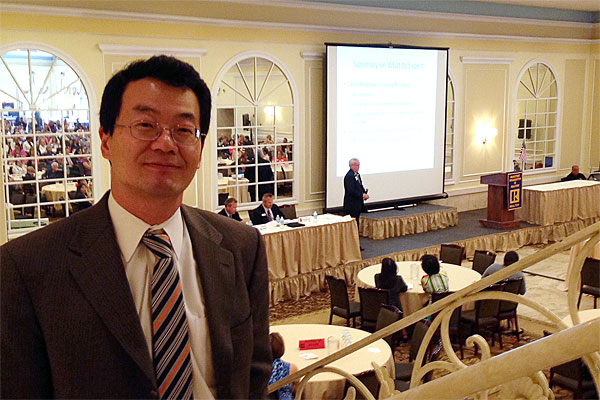
Photo: Dennis Rodkin
While Chicago has been partying about the Blackhawks’ heart-stopping win this week, in other cities they’re partying about the runup in home values. Case-Shiller’s latest data, out Tuesday, showed that while our recovery is chugging along, in many other cities the market is zooming.
But Lawrence Yun, the chief economist of the National Association of Realtors, suggested Tuesday that do-or-die last-minute shots like Dave Bolland’s are best attempted on the ice, not in home purchases.
In cities like San Francisco, Phoenix, and Las Vegas, where Case-Shiller says prices in April were more than 20 percent higher than where they had been a year ago, Yun says, “people are being forced to make rush judgments about one of the most expensive purchases in their lives.” Tight inventory, fast bidding, and the prospect of paying much more just a month or so down the line prod buyers to make a hasty decision that they might regret later.
But in Chicago, where prices rose a healthy but not scary 9.3 percent for the year—below the top 20 cities’ average of 12.1 percent—there’s less frantic haste. “In Chicago, people can take the time to make a more financially comfortable decision,” Yun said.
Yun said this to me in a private interview after making a forecasting presentation to members of MORe, the association of suburban Chicago real estate agents. If his comment sounds like he was trying to put lipstick on a pig, he wasn’t. Chicago is at last recovering healthily: that 9.3-percent price growth was above six other major U.S. cities, pulling us up off the lower rungs for the first time in a while.
And Yun’s comments to the larger crowd were not universally positive, although they did generally point to a healthier residential real estate market in the next few years. Among the other points Yun made Tuesday were:
- Rising interest rates aren’t likely to crimp Chicago’s recovery as soon as they might hurt the highest-priced cities like Boston, New York and San Francisco. While every uptick in interest rates steals some affordability away from potential buyers, that effect is, obviously, magnified in places where people have to borrow larger amounts to buy. Because of its lower prices relative to the major coastal cities, Yun said, “Chicago can more easily absorb the rising rates.”
-
Chicago’s large “shadow inventory,” or the number of properties in some stage of foreclosure that haven’t yet been seized by the banks, is problematic now and could become more so later. The big shadow inventory is caused largely by Illinois’ judicial foreclosure process that prolongs the time that a distressed property waits to return to the open market. This keeps potentially buyable homes from joining the available inventory, and keeps potential buyers hoping for more low-priced homes, so they put off buying conventional homes that are on the market.
- That shadow inventory, Yun pointed out, could become an even bigger liability—if more downward shocks to the economy occur and stomp down buyer confidence. “There won’t be buyers to buy them when they come on the market,” he said.
- But he’s not forecasting any big downturns, either nationally or in Chicago. Chicago has two weights on its shoulders: a higher-than-the-norm unemployment rate and a hugely suppressed homebuilding industry. One hurts the demand side, the other the supply side. But In both cases, Yun sees generally positive movement, just as he does for the larger national economy.
The economy and home prices should continue to grow for the rest of this year and in 2014 (though slightly less next year than this), Yun forecasts. A big reason for this is that a string of uncertain years made buyers skittish, but now mostly strong signals from the economy are breathing confidence into them: “Buyers are rational decision-makers,” Yun said. “They don’t want to buy a depreciating asset. So [the ones] who were not jumping, who were saying, ‘I know it’s a good buy, but it might be a better buy later,’ [see that] now there is no better buy coming later.”


